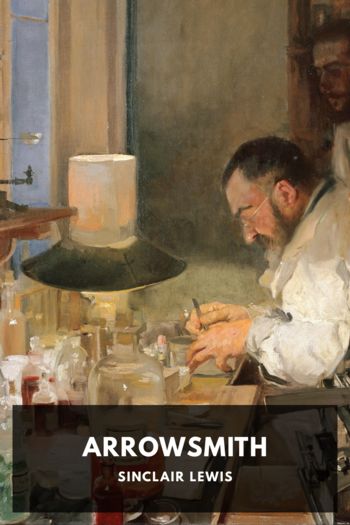Holocaust: The Nazi Persecution and Murder of the Jews, Peter Longerich [essential books to read TXT] 📗

- Author: Peter Longerich
Book online «Holocaust: The Nazi Persecution and Murder of the Jews, Peter Longerich [essential books to read TXT] 📗». Author Peter Longerich
preparing their own measures against the ‘work-shy’, Himmler ordered an inde-
pendent Gestapo action against this group. The group in question—individuals
capable of gainful employment who had refused jobs offered to them twice
without justification, or had taken on the work but then abandoned it without
any sound reasons—were to report via the labour offices to the Gestapo stations
and be transferred to Buchenwald concentration camp. The operation began on 21
April 1938 and ended officially on 30 April, although it may possibly have
extended beyond that date. As a result of the arrests in the context of this
operation, by the beginning of June 1938 there were almost 2,000 prisoners in
Buchenwald. 7
The Reich-wide Kripo operation against ‘asocials’ (operation ‘Reich Work-
Shy’) began in the same month. The fact that this operation was to include all
Jews with previous convictions (however minor) clearly reveals the complemen-
tary function of racial hygiene and racist anti-Semitism within the National
Socialist project of a racially homogeneous social order. (The operation will be
examined more closely within the context of the depiction of the third wave of
anti-Semitism.)8
While the persecution of the Gypsies had proceeded along more or less
conventional lines in the first years of the NS dictatorship, between 1936 and
1938 the essential foundations were laid for a systematic persecution of this
population group on a racist basis.
After the Reich Ministry of the Interior standardized the stipulations of the laws
regarding Gypsies in the Länder, in autumn 1936 the Prussian State Criminal
Police Office began to centralize the persecution of the Gypsies. In 1937 the office,
by now transformed into a Reich Criminal Police Office, took over the ‘Gypsy
Central Office’ that had existed within Munich Police Headquarters since 1899,
which now acted as ‘Reich Office to Combat the Gypsy Plague’. 9 From the end of 1938 until the middle of 1939, a criminal police apparatus extending all the way
down to local police authorities was set up to combat Gypsies.
Since autumn 1937, the Reich Criminal Police Office had worked closely with
the Racial Hygiene Research Centre within the Reich Health Authority which,
under the direction of Robert Ritter, focused upon the ‘Gypsy question’. Since
1937 the Research Centre had undertaken an anthropometrical and genealogical
investigation of all Sinti and Roma in the Reich. On the basis of these investiga-
tions the Research Centre produced racial hygiene reports in which distinctions
were made between ‘genuine’ Gypsies and ‘half-breed Gypsies’. The Criminal
Police were able to use this material as a database for the persecution of the
Persecution of Non-Jewish Groups by the Police, 1936–7
93
Gypsies. Towards the end of the war, with about 25,000 reports, Ritter’s institute
claimed to have recorded almost the whole Gypsy population of the Old Reich
territory. 10
After Himmler had taken over the whole of the police in summer 1936, the
persecution of homosexuals was also intensified. 11 Even before the end of the year a ‘Reich Central Office for Combatting Homosexuality and Abortion’ was set up
within the Prussian State Criminal Office, which centrally recorded particular
categories of male homosexuals. For a time the Gestapo was able to take over
control of the Reich Central Office, although with the start of the war this came
back within the sphere of responsibility of the Kripo. 12 Himmler indicated the priority given to the suppression of homosexuality with reference to the fact that
he had stated in March 1937, at a meeting of Kripo and Gestapo leaders, that he
would henceforth measure the effectiveness of the Kripo according to its successes
within the sphere of the battle against homosexuality and abortion. Accordingly
the number of those sentenced for offences against paragraph 175 of the Reich
Penal Code suddenly rose: from 766 (1934) to over 4,000 (1936) and over 8,000
(1938). After 1937, homosexuals with more than three relevant convictions behind
them, with sentences each of at least six months’ imprisonment, were sent to
concentration camps once they had served their regular sentences. 13
Finally the police apparatus took systematic action against the so-called
‘Rhineland Bastards’, those young people who were the product of relations
between German women and colonial soldiers from the time of the French
occupation of the Rhineland. As early as 1935 the Specialist Advisory Board for
Population and Race Policy agreed to ‘solve’ this ‘bastard question’ by means of
sterilization, although they were initially unable to reach agreement upon the
procedure. 14 Early in 1937 the decision was redrafted so that Afro-Germans were to be compulsorily sterilized outside the existing legal procedure; a relevant
‘special instruction’ from Hitler seems to have been produced. 15 Accordingly, in the spring of 1937 a special commission was set up which, over the coming
months and with the assistance of three sub-commissions, performed the
sterilization of some 600–800 young people. 16
The practice of German Racial Policy also raised the problem of how the
children of German and non-European foreigners, described in Nazi language
as ‘alien half-breeds’ (artfremde Mischlinge), were to be treated. For this group, the
race legislation was similar. In a document dated February 1937 the Foreign Office
indicated that over the previous two years about fifty cases at most had appeared,
in which ‘the German race legislation was to be applied to non-Jewish alien half-
breeds’. It had turned out that the ‘domestic political interest in an enforcement of
racial legislation was in most cases entirely insignificant, while on the other hand
the fear of foreign political disadvantages was always justified and decisive’.
Generally, then, the emergency regulation intended for such cases had been
applied. The number of those cases in which, because of fundamental ‘racial
94
Racial Persecution, 1933–1939
policy’ considerations, foreign policy concerns had been set aside and it had been
impossible to apply the emergency regulation ‘had numbered about 5 over the past
4 years’. In view of this practice, the Foreign Office suggested that the race
legislation be fundamentally restricted to Jews and that those race laws already
passed be altered, replacing terms such as artfremd (alien) or ‘non-Aryan’ with
‘Jewish’.
On 22 April 1937 the Reich Interior Ministry fundamentally adopted a position
on the relationship between ‘racial policy’ and Jewish policy. The Interior Ministry
established that the ‘final goal of the National Socialist movement . . . was to
eliminate all people of alien blood from the German national body’ (Volkskörper).
Besides, a change in the race laws was inopportune because it would be interpreted
abroad as a





Comments (0)